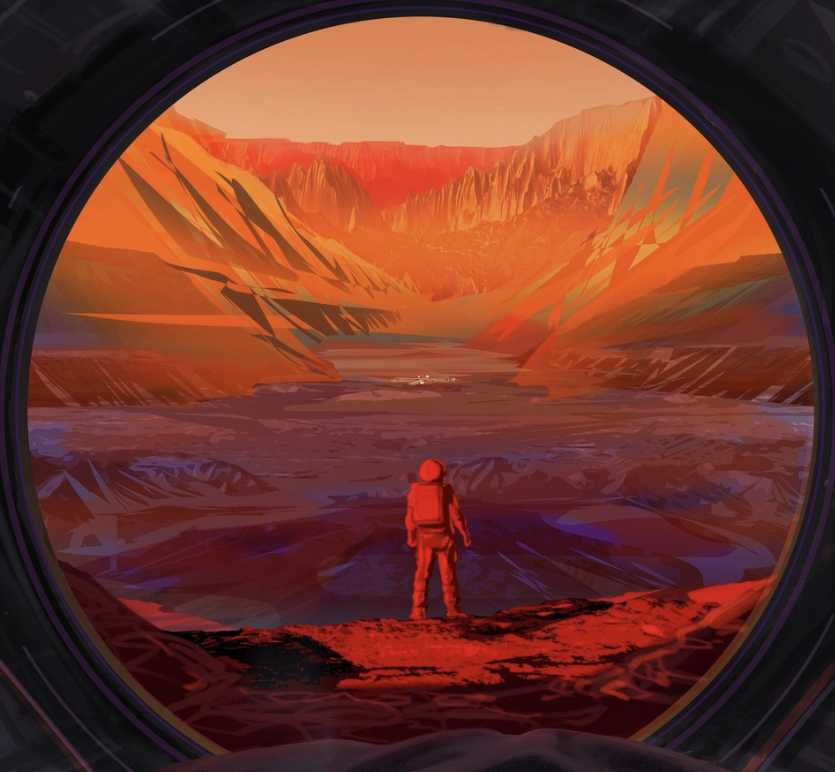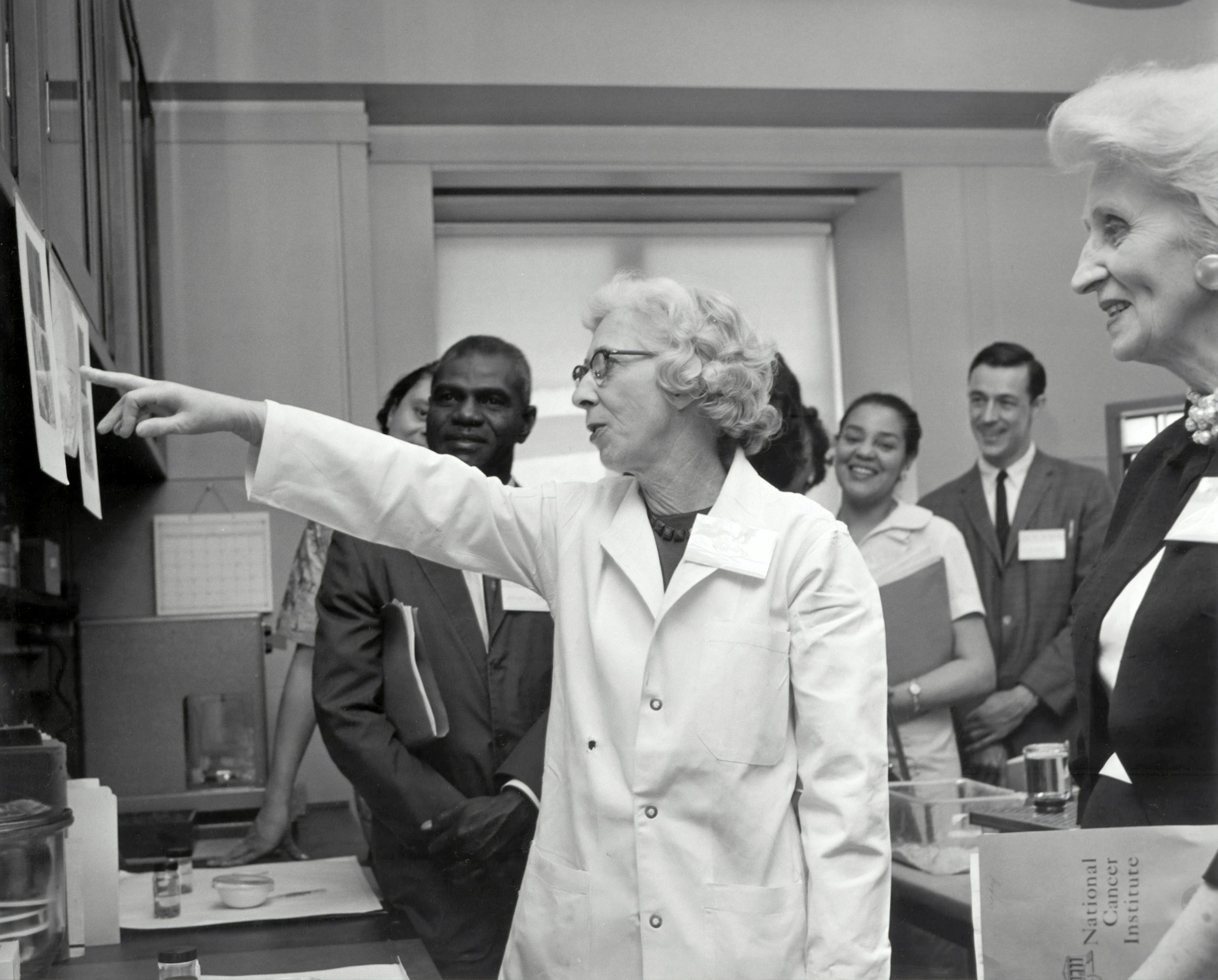Can biochemistry help us overcome the challenges in enabling human life in space? Image credit: Wikimedia Commons, CC0.
This article is the winner of the Science Communication Competition organised by The Oxford Scientist, and supported by the Biochemical Society.
Space travel is becoming more common and commercialised. NASA claims its ‘Journey to Mars’ should place humans on the red planet in the next 20 years, while SpaceX suggests a million people will live there by 2060. But before this can happen, many current barriers to supporting life on another planet need to be considered, including the designs of life-supporting equipment, habitats, and energy-generation systems, alongside access to food, breathable oxygen, and drinkable water. Biochemical research would also be required to understand the physiological impact of any designed protective measures in comparison to space without them.
Will space travel affect human health?
Concerns over the health of astronauts have been mounting for years, and this worry will likely grow with more older or less healthy individuals partaking in future space tourism. In the Apollo missions, astronauts experienced many health issues, such as heart arrhythmia, low blood pressure, and loss of calcium from their bones. Much research is going into the health risks associated with space travel and future Mars missions, allowing us to biochemically characterise what happens to the body in space. This understanding can help us design better equipment and technologies to protect those outside of Earth.
In the Apollo missions, astronauts experienced many health issues, such as heart arrhythmia, low blood pressure, and loss of calcium from their bones.
NASA has outlined some key space hazards for bodily stress, with space radiation and differing gravitational fields being some of the most dangerous. Two of the most harmful consequences of these hazards on human health are increased DNA damage and rising levels of pathogenic infection – issues biochemistry hopes to combat.
What are the biochemical consequences of space hazards on the body?
Earth is surrounded by magnetic fields that shield us from harmful solar and cosmic particle radiation, and even solar flares, whereas we would be continually exposed to these dangers in space or on Mars. This radiation exposure could kill cells, or it could cause DNA strand breaks and other mutations. Cells can repair DNA damage, but mis-repairs accumulate over time.
Further, life on Earth has evolved around gravity, a defined downward vector, but we wouldn’t experience gravity in the same way in space. Instead, we would experience weaker gravity, or microgravity. While there is little published research so far on the precise effects of microgravity on our biochemistry, many theories currently exist as to how it affects life in a different way to Earth’s gravity.
For instance, bacteriophages, viruses that infect bacterial cells, normally rely on diffusion to infect host cells, but microgravity may influence their diffusion between hosts. These different conditions have the potential to confer new space-specific functions onto bacteriophages. In 2020, stocks of bacteria and bacteriophages were sent to the International Space Station (ISS) so that we can learn more about how microbes respond to such differing conditions. This can improve our understanding of how both pathogenic and symbiotic microbial populations in and on humans function in microgravity, which would be essential for human health in space.
Thus, space hazards like radiation and microgravity can induce molecular and cellular change in the body, and lead to potential health conditions, including cancer, degenerative diseases and infection. This means working to minimise their risk to humans in space is vital. Studies in biochemistry are proving crucial in the characterisation of these health risks and their mechanisms, and only with this work will we be able to safely send humans to Mars.
How will biochemistry protect human genomes in space?
A 2020 review in Cell outlined research into genetic and epigenetic alterations that can occur with space travel. Exposure to space radiation and microgravity play key roles in elevating oxidative stress, raising the amount of free oxygen radicals in the cell beyond its antioxidant capabilities, and causing DNA damage. DNA damage can also occur by ionising space radiation-induced DNA breaks, both directly and indirectly. When this damage isn’t properly repaired, there can be many consequences, including harmful mutations and chromosomal rearrangements, cell death, and even carcinogenesis.
Further, Science’s ‘NASA Twins Study’ uniquely outlined the biochemical genomic differences between individuals on Earth and in space. Scott Kelly went to the ISS for a year, while his twin, Mark, remained on Earth. In space, Scott experienced increased chromosome aberrations in response to radiation, where the structure or number of chromosomes in his cells changed. The study also saw changes to his DNA methylation patterns in his immune cells, which is a modification important in changing gene expression patterns and subsequent behaviours. Thirdly, alterations to the lengths of his telomeres were also measured. Telomeres are protective molecular caps on the ends of chromosomes, which shorten with age, and function in protecting and stabilising the chromosome. Scott’s telomeres became longer on the ISS and returned to their previous lengths on his return to Earth, but some eroded completely. While this study is far from perfect, with the little data we have of human genomics in space, it certainly raises questions regarding the safeguarding of human genomes in space.
One perspective on this is the potential advantages of the genetic alteration of humans for space travel.
Alongside research into DNA repair, pinpointing precise changes to our DNA may mean we can molecularly target them. One perspective on this is the potential advantages of the genetic alteration of humans for space travel, as outlined by George Church, a Harvard geneticist. Church has identified at least 40 genes that would be advantageous for long-term space travel, including those conferring radiation resistance and a lower reliance on oxygen, and he thinks transforming astronaut’s genomes could eventually become a reality. Even if possible, whether such transformations would be ethical is another question…
There are many risks to our genome out in space, but using biochemistry to understand how and why they affect our DNA could help us reduce the harm. Importantly, this biochemical effort can begin to collaborate with engineering efforts to build safe structures and technologies around what we know and understand about space and human health, and perhaps we may see biochemically-derived health interventions too.
How will biochemistry protect immune systems in space?
Many astronauts in the early Apollo missions, within a week of their return to Earth, fell ill with colds or infections. Some experienced the reactivation of dormant viruses in their bodies, and many succumbed to opportunistic viral infection. Why this prevalence of pathogenic infection occurs isn’t fully understood, but important work has started to uncover some explanations.
One Nature article in 2021 outlined increased immunosuppression in astronauts in space. Normally acting to attack pathogens and coordinate the immune response, cytotoxic killer responses of T lymphocyte cells were reduced in space, meaning the immune system was weaker in launching attacks against invading pathogens. Alongside this, the observed increase in immunosuppression also resulted from abnormal activation of T regulator cells, which normally turn on when the body is no longer threatened by infection, so they were suppressing immune responses even in the presence of a pathogen. These effects reduced the body’s capacity to respond to potential pathogenic stimuli in space and left the body less defended. This would explain their observed increased viral shedding, the release of viral particles into the environment during host infection. Such an increase in infection could interfere with long-term space missions, and could pose serious threats to the health of astronauts.
Many astronauts in the early Apollo missions, within a week of their return to Earth, fell ill with colds or infections.
Another study sent mice to space on the Space Shuttle Discovery, where they observed the downregulation in activation of some early immune genes and cytokine genes. This aligns with the above study, which also showed decreased interferon transcription after microgravity exposure, and could be a consequence of the changing DNA methylation patterns seen in the ‘NASA Twins Study’. This means there will be less signalling and coordination between immune cells, dampening their response to infection. Further studies like these will continue to uncover other biochemical mechanisms around these phenomena, allowing us to characterise how these events occur and help us combat them.
These effects on the immune system have been put down to the effects of microgravity. A better understanding of how the immune system changes in microgravity could result in improved interventions to preserve astronauts’ immune defences in space, especially in extended exposures to microgravity on long-term space missions. This becomes particularly important if we begin to see less healthy individuals travelling to space for tourism, who would potentially be more vulnerable to such immune perturbations.
Will biochemistry help us go to space?
Currently, humans are incompatible with a Mars mission. But, as large space corporations are hoping, future space travel may not yet be off the cards. Biochemical investigations and interventions into human health in space could result in the protective and preventive measures we require to survive in such an extreme environment. Missions to Mars, should they occur, will be indebted to the biochemistry that safely allows their astronauts to explore the red planet without fear of biological harm.





